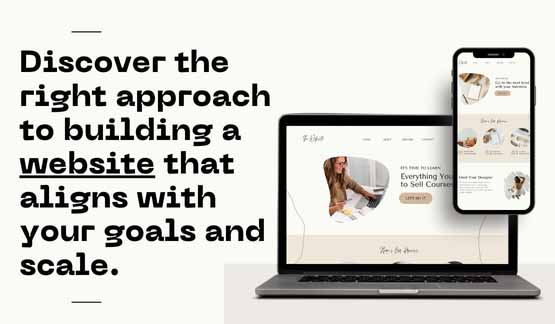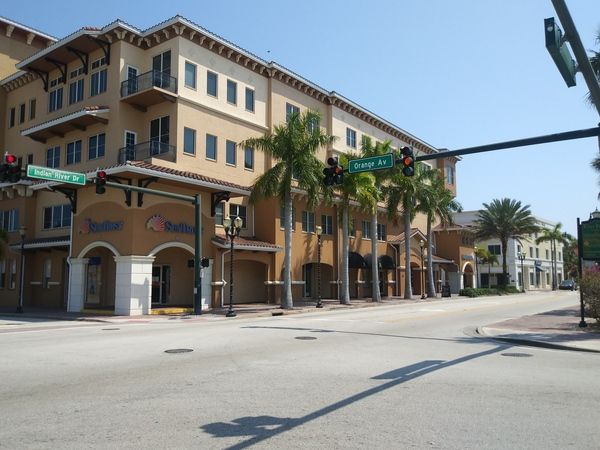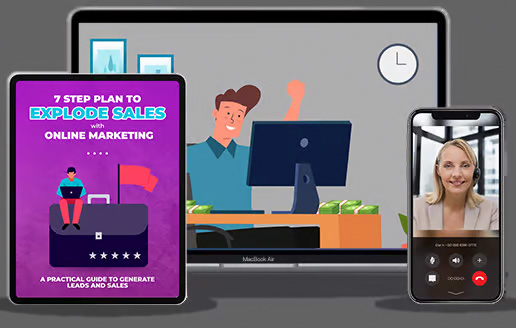Discover the right approach to building a website that aligns with your goals and scale.
Every business needs a website—but not all websites are created equal. For some, a simple page with contact details is enough to support word-of-mouth referrals. For others, the website becomes a cornerstone of their operations, driving not just leads and sales but also supporting goals like customer service, hiring, or even investor relations.
The key to success isn’t about having the “biggest” or “fanciest” site—it’s about investing in a website that aligns with your current scale and business goals. Think of it like any other investment: while a more advanced system may deliver greater benefits, those benefits only pay off if they match the volume and complexity of your operations. Investing too little could mean missing opportunities, but over-investing might take years to recoup.
This framework will help you evaluate where your business stands today, what kind of website fits your needs, and when it might make sense to scale up. By matching your site to your strategy, you can avoid overspending and make your website work harder for you—whether you’re just starting out or aiming for ambitious growth.
I. Level 1: The Contact Card
What It Is
At its simplest, a Contact Card website is a single-page (or very minimal) site that provides the essential information a customer needs to connect with your business. Think of it as a digital business card: it usually includes contact details, basic branding, and perhaps a brief description of what you do.
Why It Can Work
- Improves Shareability:
A contact card website gives you a shareable link that works across platforms—whether it’s a text message, a social media post, or a networking referral. It eliminates the hassle of relying on inconsistent third-party profiles or word-of-mouth alone. - Supports Referrals:
When someone recommends your business, being able to share a simple link allows potential customers to quickly find what they need. It’s a small enhancement to your referral process that can improve follow-through. - Cost-Effective:
A contact card is often inexpensive to create and maintain, making it a great starting point for businesses that don’t yet need a more complex site.
When It Works
This level is ideal for businesses that rely primarily on word-of-mouth marketing or personal referrals. If your main goal is to have a quick, professional link to share with potential customers, a Contact Card website can be surprisingly effective.
Limitations
While a Contact Card has its uses, it’s not designed to do heavy lifting:
- Minimal Engagement: It doesn’t offer features to engage users or encourage specific actions, like filling out a form or scheduling an appointment.
- Limited Traffic Generation: Without SEO content or other strategies, it won’t attract visitors beyond those who already know about your business.
Bottom Line
A Contact Card website works best when you’re clear about its purpose. It won’t drive leads or sales on its own, but for businesses that depend on referrals or simply need a digital presence, it’s a cost-effective way to establish credibility. Think of it as a foundation—one you can build on as your business grows.
II. Level 2: Online Brochure
What It Is
The Online Brochure website is a step up from the Contact Card, offering multiple pages to provide more detailed information about your business. Often referred to as the “five-page website,” it typically includes a homepage, an “About Us” page, a “Services” or “Products” page, a “Testimonials” page, and a “Contact Us” page.
Why It Can Work
- Credibility and Legitimacy:
For some industries, having a multi-page website is seen as a baseline requirement. Schools, enterprise clients, and government agencies often expect vendors to have a more comprehensive online presence. - Space for Trust Signals:
Testimonials, certifications, and achievements can be featured prominently, helping to build confidence in your business. - Enhanced Presentation:
A polished design and well-organized content provide a professional image, signaling that your business is established and reliable.
Common Pitfalls
- Generic Content:
Many Online Brochure sites suffer from generic, uninspired content that fails to engage users. For example, “About Us” pages often focus on company history rather than addressing customer pain points or needs. - No Traffic Strategy:
Without SEO, social media promotion, or advertising, these sites rarely attract meaningful traffic. They’re built to inform visitors—but not to bring them in. - Low Conversion Features:
These sites often lack compelling CTAs or funnel design to convert visitors into leads or customers. A brochure-style website might have all the right pages but fail to guide visitors toward meaningful actions.
The Problem with Five-Page Websites
The “five-page website” is a common product offered by budget-friendly web developers, but it’s often sold as a one-size-fits-all solution. While it may look polished, its lack of strategic focus and generic structure can result in a site that’s more of a digital placeholder than a business asset.
When It Works
If you need a polished online presence for credibility—without the expectation of significant traffic or conversions—an Online Brochure can meet that need. It’s especially useful for businesses that don’t yet rely on their website as a core part of their operations.
Bottom Line
The Online Brochure is an affordable way to establish credibility and showcase your offerings. However, it’s essential to have realistic expectations. Without a clear strategy to drive traffic and convert visitors, this type of website is unlikely to generate significant returns on its own.
III. Level 3: Contextual and Engaging Website
What It Is
At this stage, the website evolves from being an online brochure to a strategic tool for customer engagement. A Contextual and Engaging Website is designed with specific audiences in mind, featuring tailored landing pages, content that aligns with user intent, and strategic CTAs that drive visitors toward meaningful actions.
Why It Can Work
- Targeted Traffic and Conversions:
By focusing on specific customer personas, you can craft landing pages and messaging that resonate deeply. These sites are optimized for search intent, not just keywords, ensuring that visitors find exactly what they’re looking for. - Data-Driven Improvements:
Analytics play a central role at this level. By tracking user behavior—such as time on page, click-through rates, and form submissions—you can continuously tweak your site to improve performance. - Enhanced User Engagement:
Instead of a one-size-fits-all approach, this level allows for segmentation. Different audiences see content and CTAs tailored to their needs, increasing relevance and engagement.
Why Most Businesses Need This Level
For the majority of businesses, this level is where websites start to deliver a meaningful return on investment. A Contextual and Engaging Website ensures that traffic isn’t wasted by aligning content with the needs of your visitors and nudging them toward specific actions.
In today’s digital-first world, most businesses need to do some form of online marketing to remain competitive. This level of website provides the foundation for converting that traffic into leads, sales, or other meaningful outcomes.
The lower levels—Contact Cards and Online Brochures—can work as special cases when simplicity is sufficient. However, businesses that expect to see growth through online efforts will find this level essential.
Potential Pitfalls
- The Missing Traffic Problem:
If you don’t have a strategy to drive traffic—through SEO, ads, or content marketing—this level won’t reach its potential. It’s designed to convert traffic, not magically generate it on its own. - Resource Demands:
While this level is cost-effective compared to higher tiers, it still requires ongoing attention and optimization to stay relevant and effective.
When It Works
This level is ideal for businesses that recognize the importance of online marketing and are committed to attracting and engaging audiences. Whether through SEO, paid ads, or social media campaigns, this is the stage where a well-designed website becomes a true driver of business growth.
Bottom Line
The Contextual and Engaging Website is where most businesses should aim to be. It’s not about bells and whistles—it’s about strategy. When paired with a solid traffic plan, this level of website transforms visitors into valuable leads and customers, ensuring a measurable return on your investment.
IV. Level 4: Digital Business Enablement
What It Is
At this stage, a website becomes more than just a marketing tool—it integrates with operational systems to automate tasks, enhance efficiency, and scale your business. From email marketing and appointment scheduling to e-commerce and lead nurturing, a Level 4 website supports both sales and operations in a cohesive digital ecosystem.
Why It Can Work
- Efficiency Through Automation:
Automating routine tasks—like sending follow-up emails, confirming appointments, or processing payments—saves time and reduces the risk of human error. - Scalability for Growing Businesses:
As your traffic increases, advanced tools like landing page optimization software or automated email sequences ensure your site can handle growth without adding manual workload. - Measurable ROI:
By tracking every stage of the customer journey—from the initial click to post-purchase engagement—you gain valuable insights that allow you to refine and optimize for better results.
Cost vs. Value
While this level delivers significant benefits, it comes with higher costs. Subscription fees for marketing tools, CRM integration, and analytics software can add up quickly.
The key is scale. For a business spending $20,000 or more per month on ads, tools like landing page optimizers or automated lead scoring can deliver substantial ROI. However, if your ad budget is only a few hundred dollars, the investment in these tools might not pay off.
When It Works
This level is a great fit for businesses that:
- Are investing heavily in online marketing (e.g., ads, SEO, or content).
- Have a high volume of leads or customers that need to be managed efficiently.
- Are ready to scale their operations and maximize the return on their marketing spend.
Potential Pitfalls
- Over-Investment:
Without sufficient traffic or sales volume, the costs of advanced tools can outpace the benefits. - Complexity Overload:
If you lack the expertise to manage the systems effectively, automation can lead to confusion or inefficiencies rather than improvements.
Bottom Line
Digital Business Enablement is about scaling smarter, not harder. By leveraging automation and integration, this level of website supports both growth and efficiency. It’s a transformative step for businesses with the traffic, budget, and operational needs to make it worthwhile.
V. Level 5: The Full Digital Ecosystem
What It Is
The Full Digital Ecosystem is the pinnacle of website maturity, where the site operates as a fully integrated hub for marketing, operations, and beyond. This level goes beyond customer engagement to support internal processes, streamline workflows, and align all aspects of the business. From HR and inventory management to investor relations and customer service, the website becomes a central node in a broader digital infrastructure.
Why It Can Work
- Comprehensive Business Efficiency:
By integrating with systems like CRMs, ERP tools, and customer service platforms, the website helps eliminate silos, automating processes across multiple departments. - Data-Driven Decision Making:
Real-time analytics provide insights into customer behavior, sales trends, employee performance, and operational metrics, allowing for informed decision-making at every level. - Enhanced User Experience:
Whether it’s a customer navigating the site, an employee accessing internal resources, or an investor reviewing reports, a Full Digital Ecosystem ensures seamless and efficient interactions.
Who Benefits
This level is designed for organizations with complex operations and significant scale, such as:
- Enterprises with large customer bases or high transaction volumes.
- Companies that rely on extensive stakeholder engagement, like donor-driven nonprofits or publicly traded corporations.
- Businesses that need to align internal teams with external-facing goals.
Potential Pitfalls
- High Costs and Complexity:
Building and maintaining a Full Digital Ecosystem requires significant investment in both technology and expertise. - Organizational Buy-In:
Achieving this level often requires cultural and operational shifts within the organization. Without buy-in from leadership and staff, the system may fail to deliver its full potential. - Risk of Overbuilding:
Some businesses attempt this level prematurely, creating a system that’s more complex than their needs justify.
Bottom Line
The Full Digital Ecosystem is a game-changer for organizations that have reached the scale and complexity to make it worthwhile. It’s the ultimate evolution of a website—one that supports not just marketing and sales but the entire business. For companies at this level, the website isn’t just an online presence; it’s an indispensable business tool.
VI. Conclusion: The Right Fit for Your Journey
Not every business needs a Level 5 website—and that’s okay. The key to success isn’t reaching the “top” level but aligning your website with your current goals and scale.
A Contact Card (Level 1) can be transformative for a business relying on word-of-mouth referrals. A Contextual and Engaging Website (Level 3) is often essential for small businesses aiming to grow through online marketing. And for companies ready to scale significantly, Digital Business Enablement (Level 4) or a Full Digital Ecosystem (Level 5) might be the right fit.
The lower levels aren’t inherently “less than”—they can deliver tremendous value when used intentionally. But when businesses overreach without the scale or strategy to justify it, even the most advanced website can become a drain rather than an asset.
By assessing where your business stands today and planning for where you want to go, you can build a website that grows with you, providing a foundation for long-term success.
Where Do You Stand?
- If you’re starting out, a simple contact card might be your best first step.
- Ready to grow? A contextual and engaging website could unlock your potential.
- Scaling rapidly? Consider automation and integration to support your growth.
Whatever stage you’re in, the most important thing is aligning your website with your strategy, ensuring every dollar invested delivers a measurable return.



